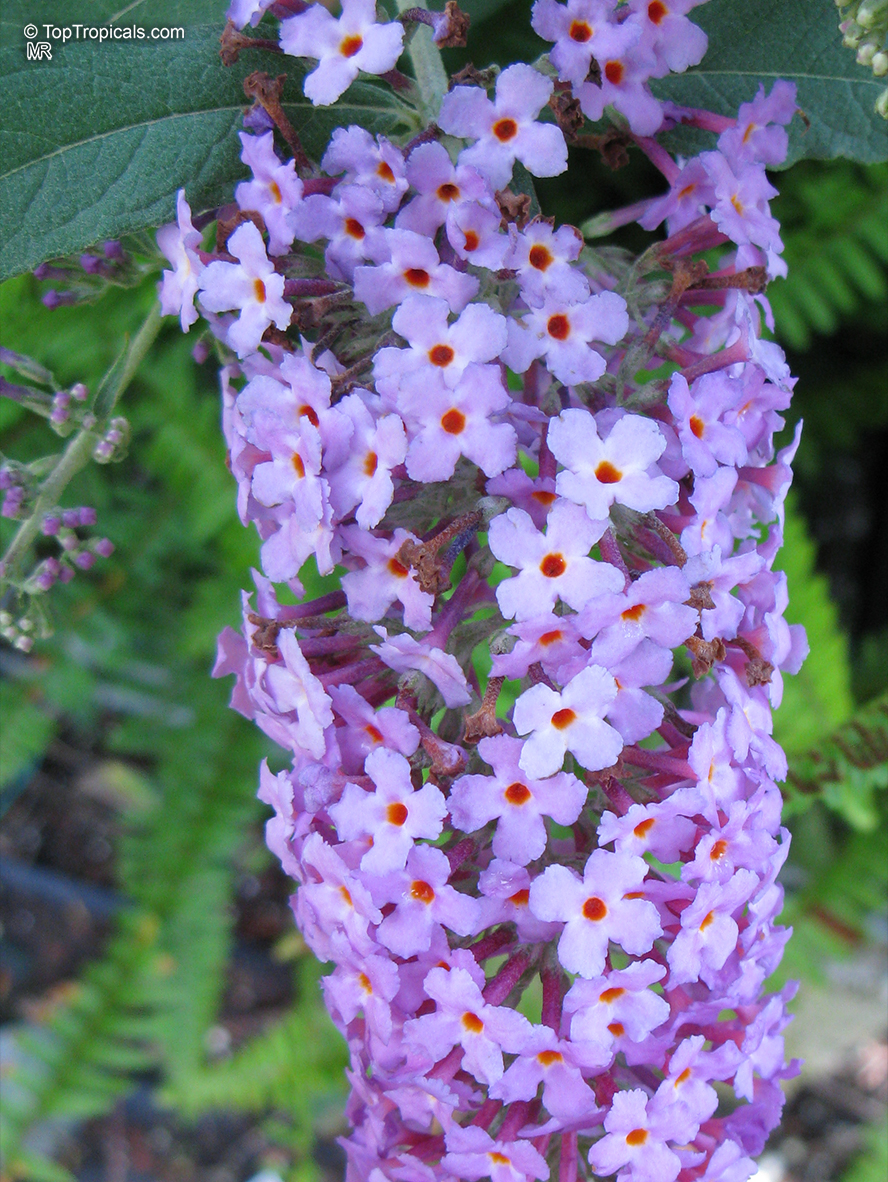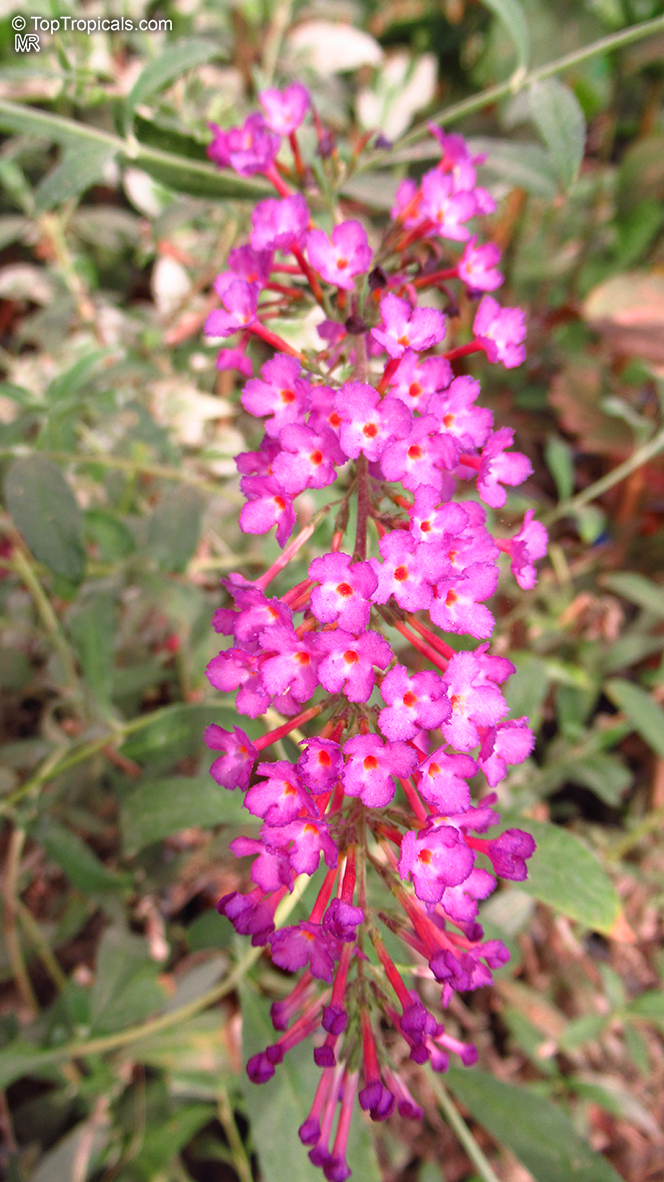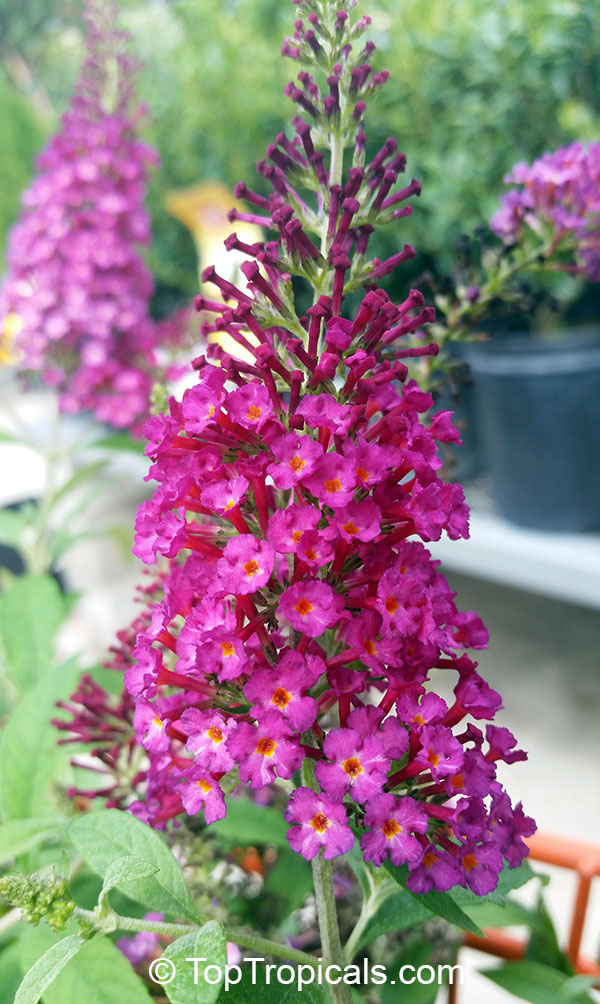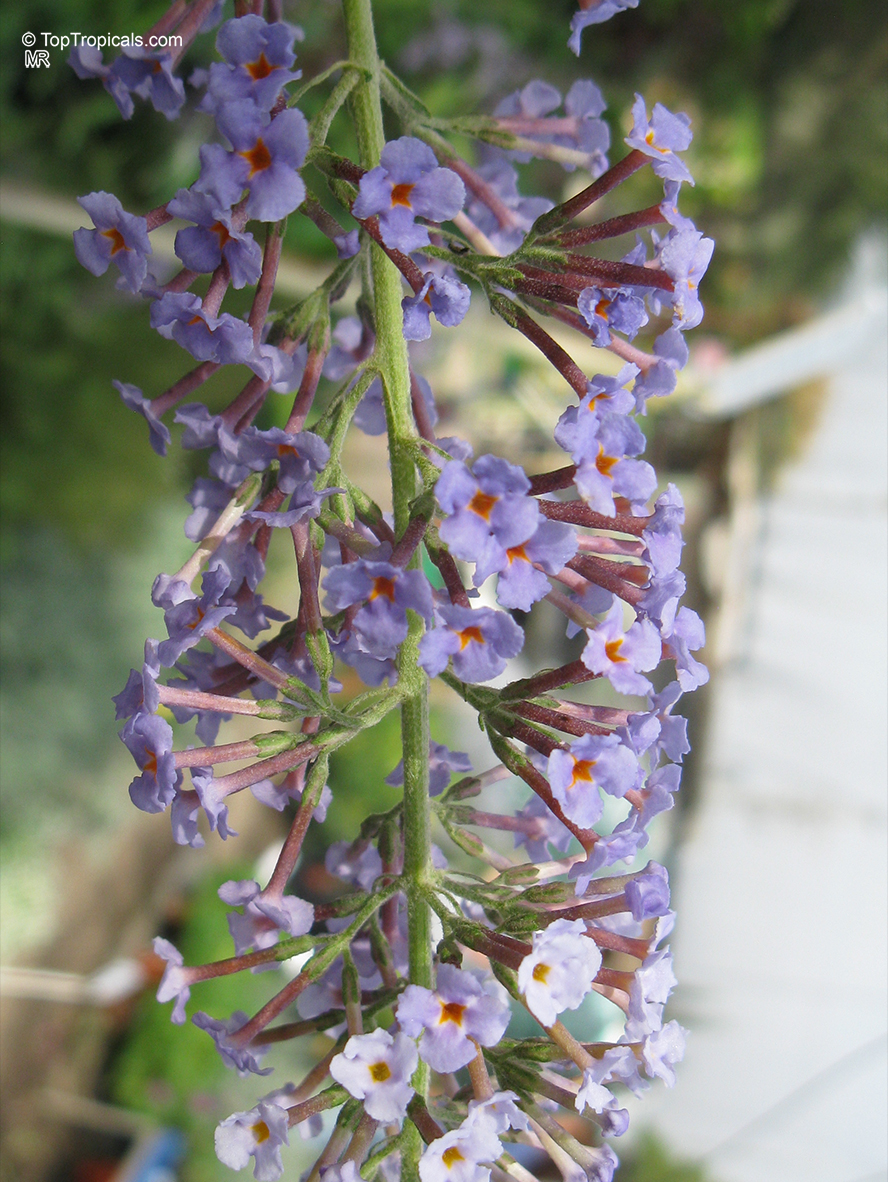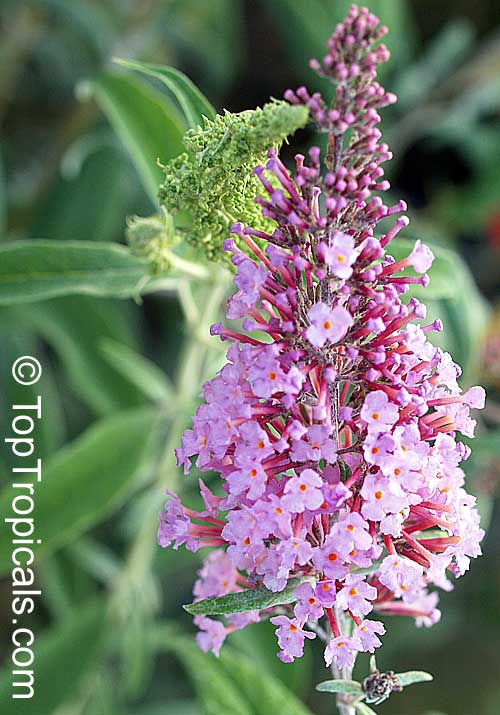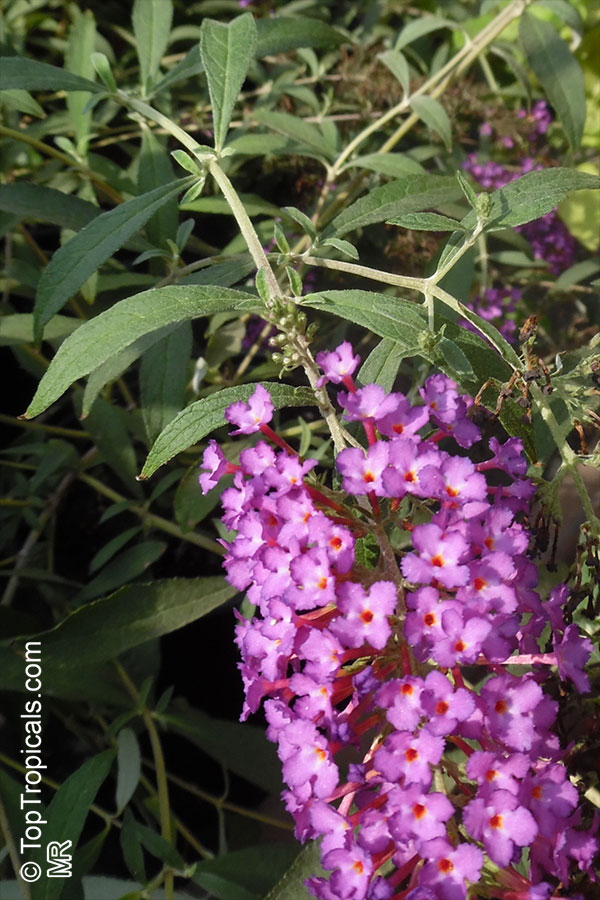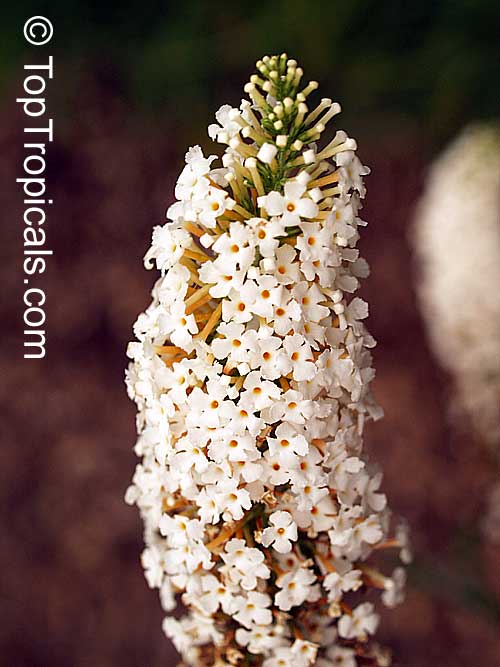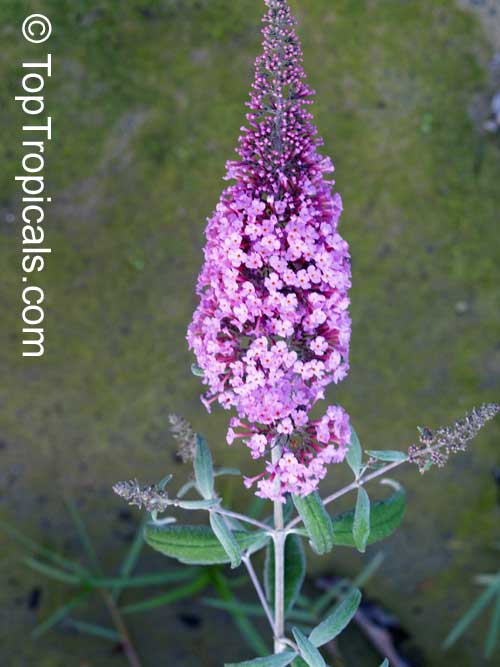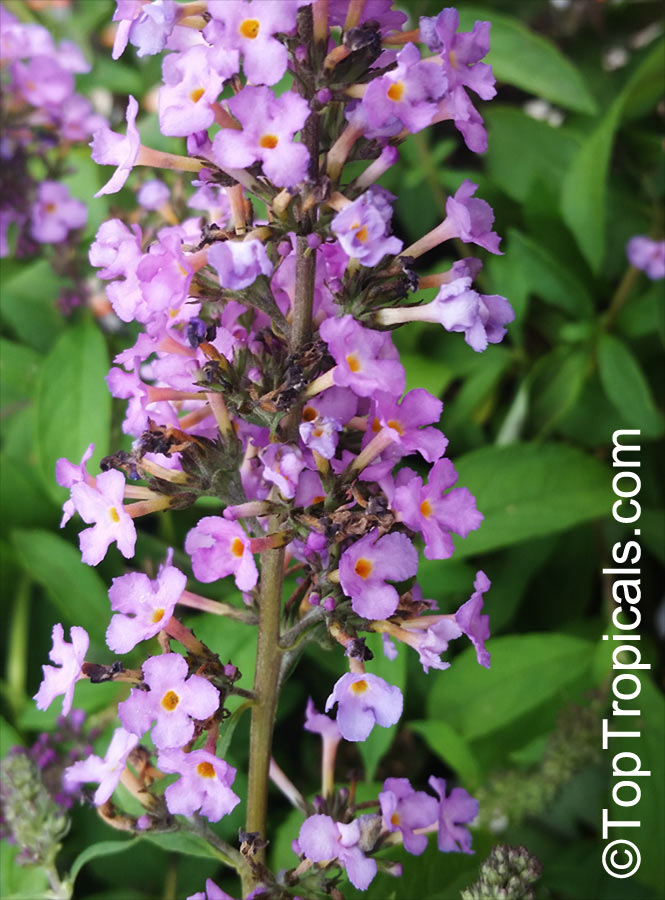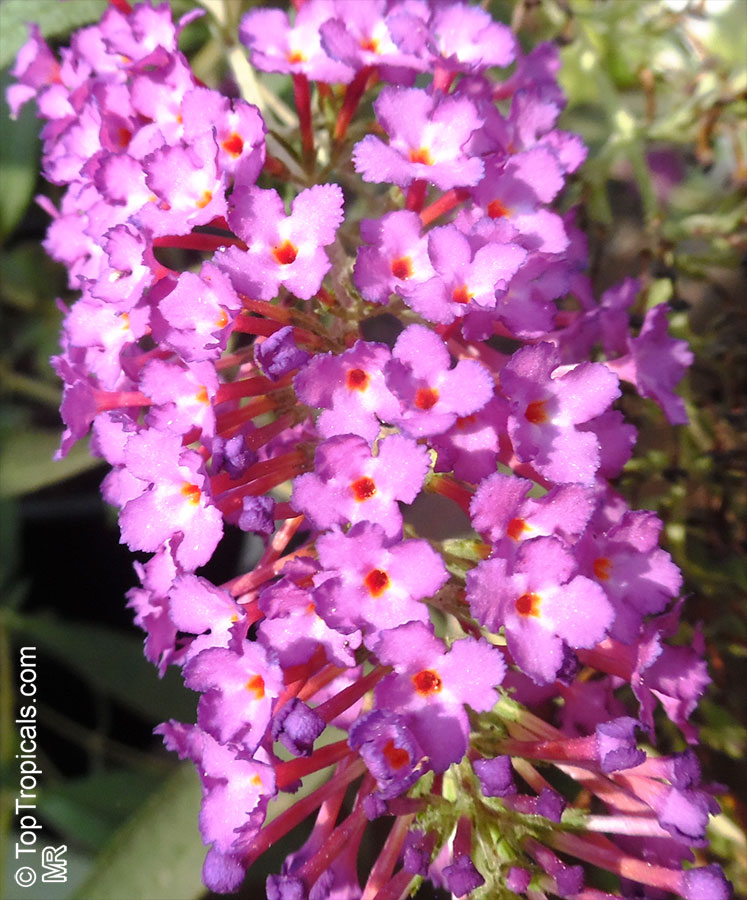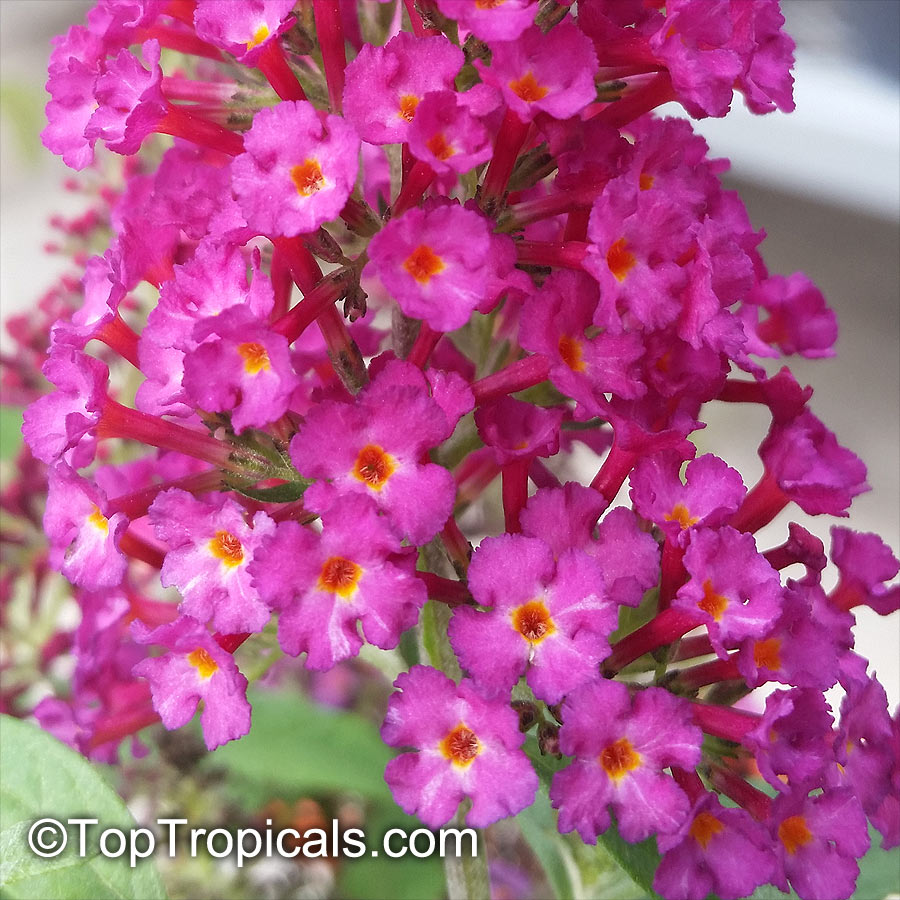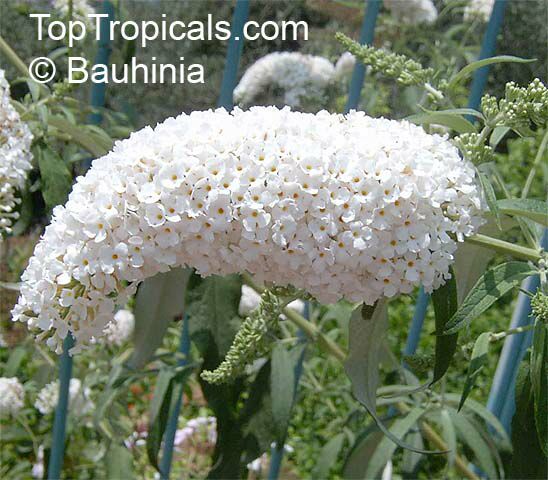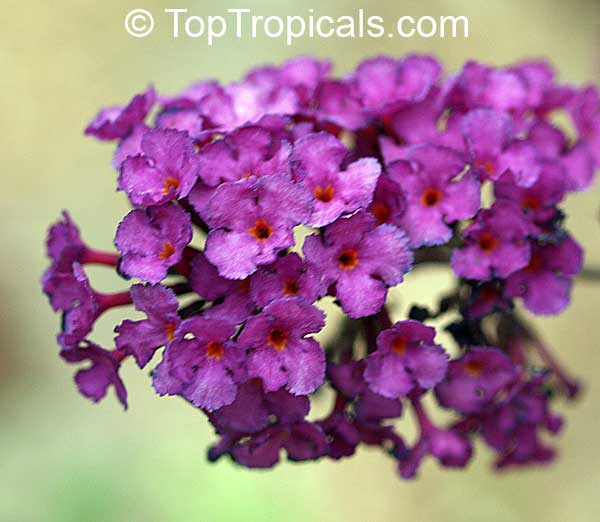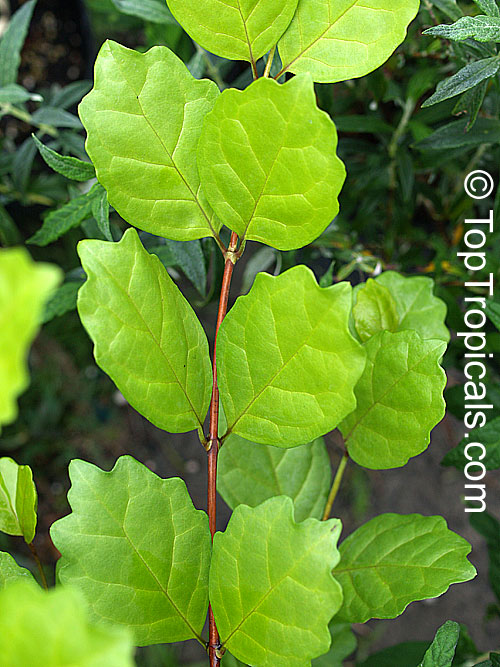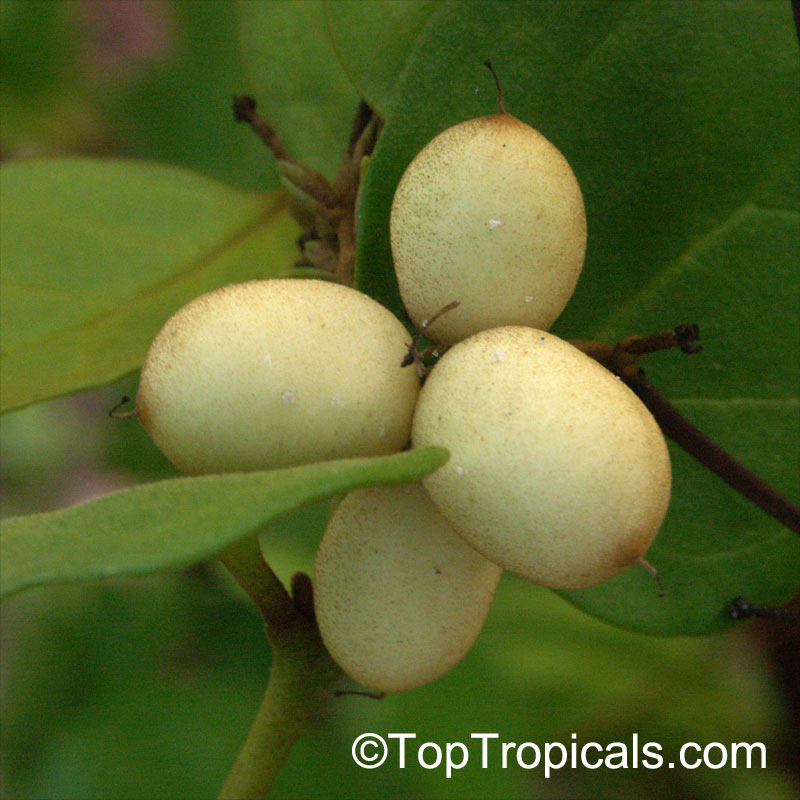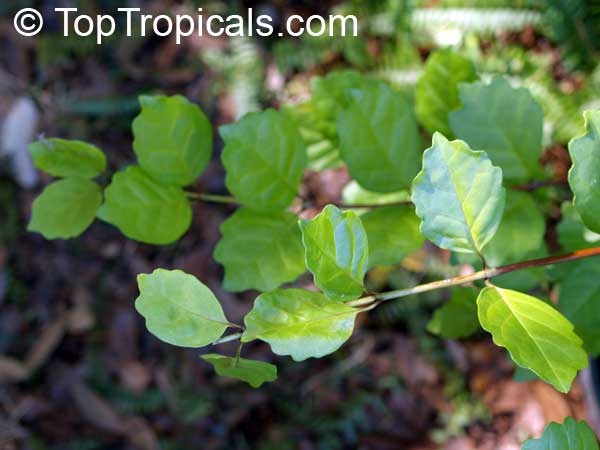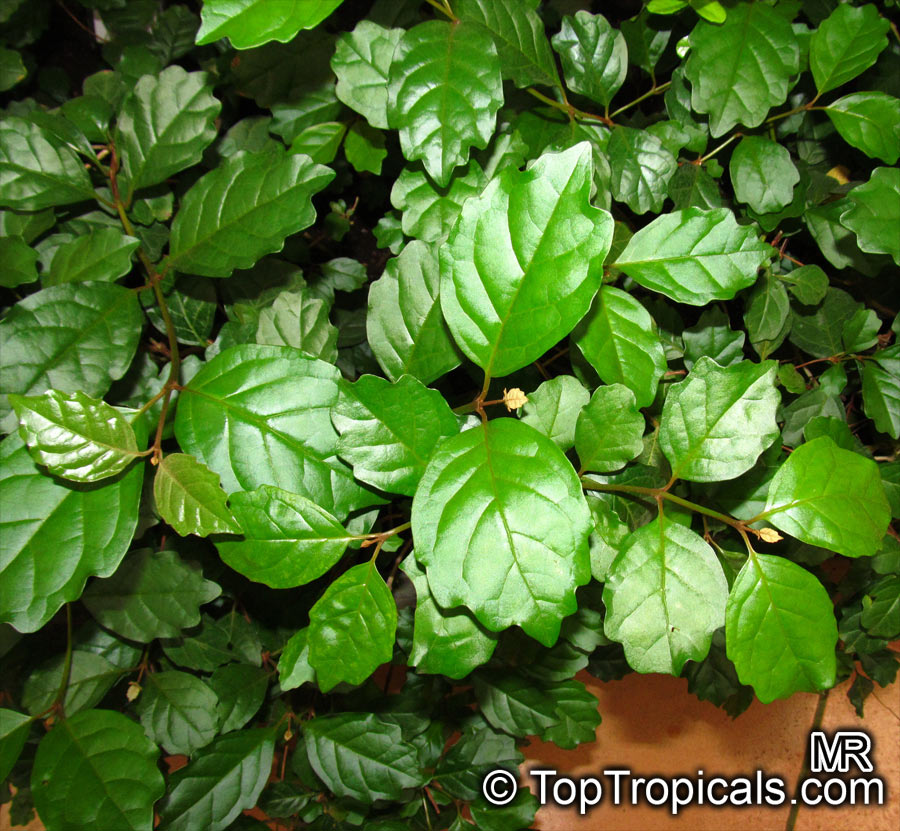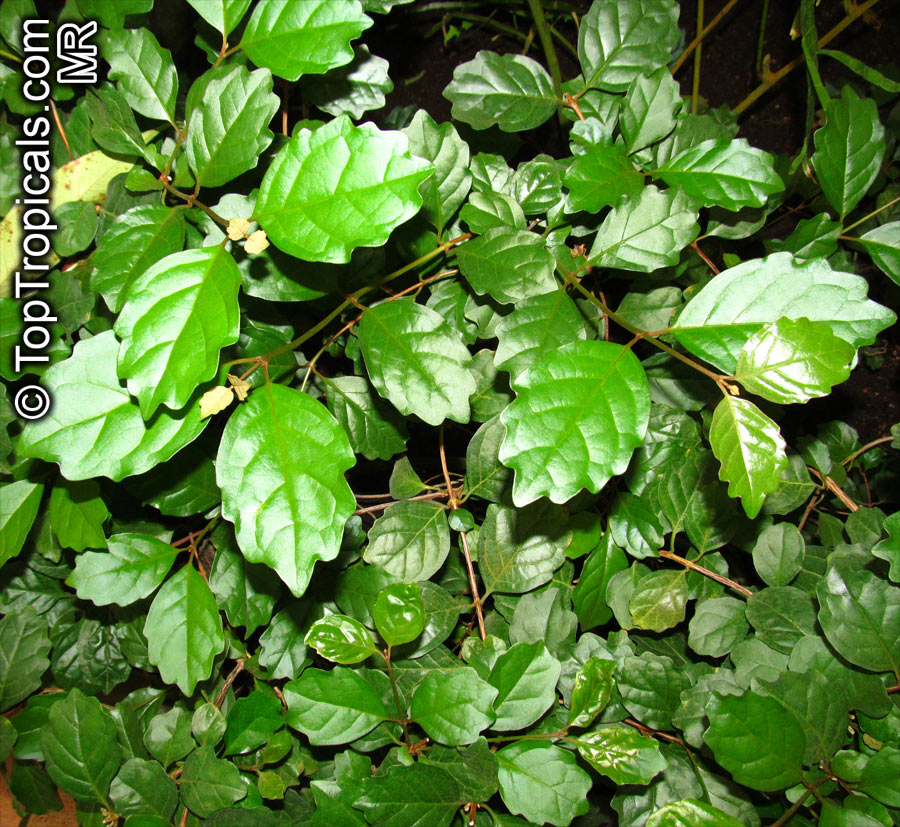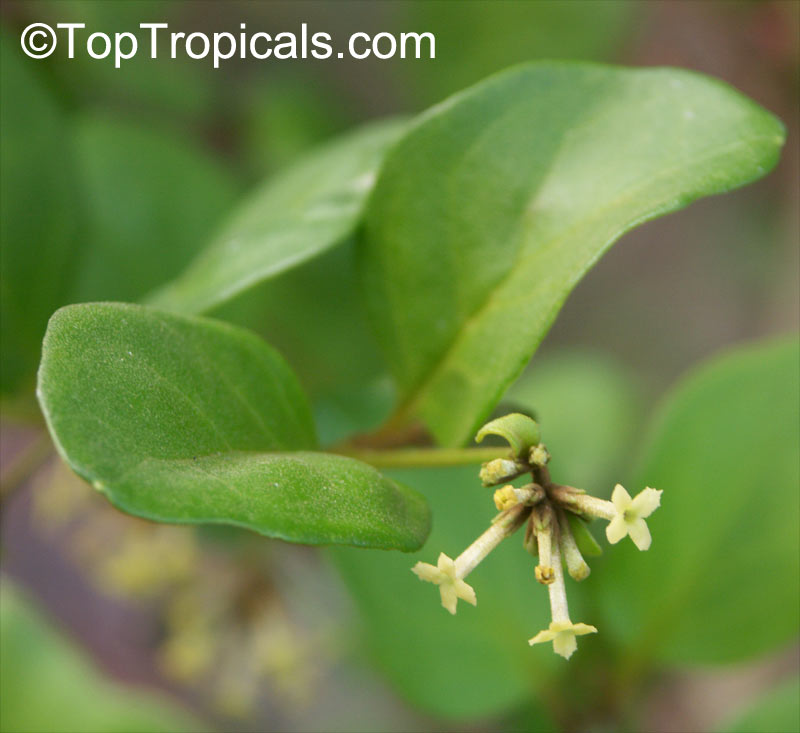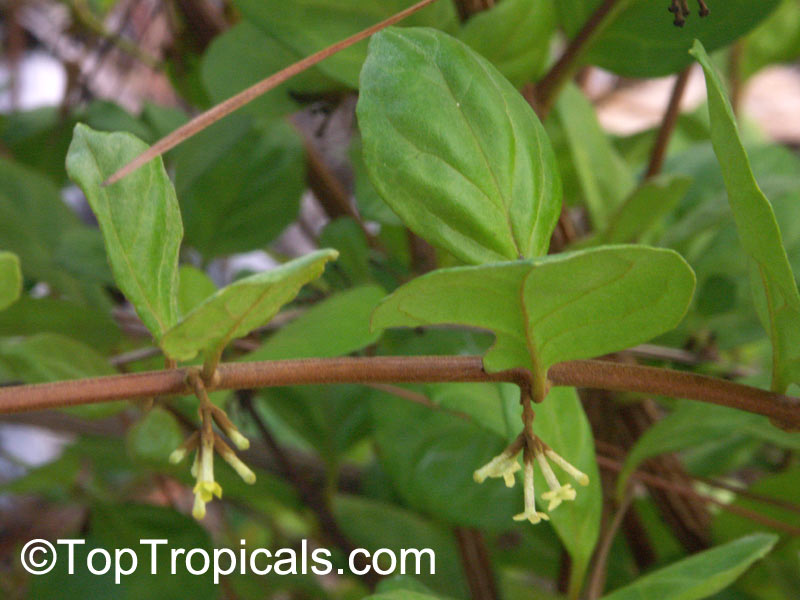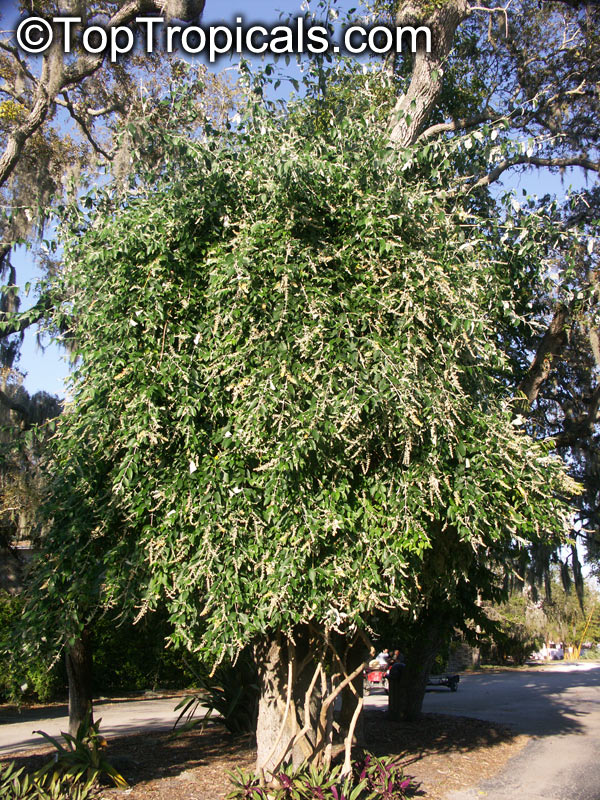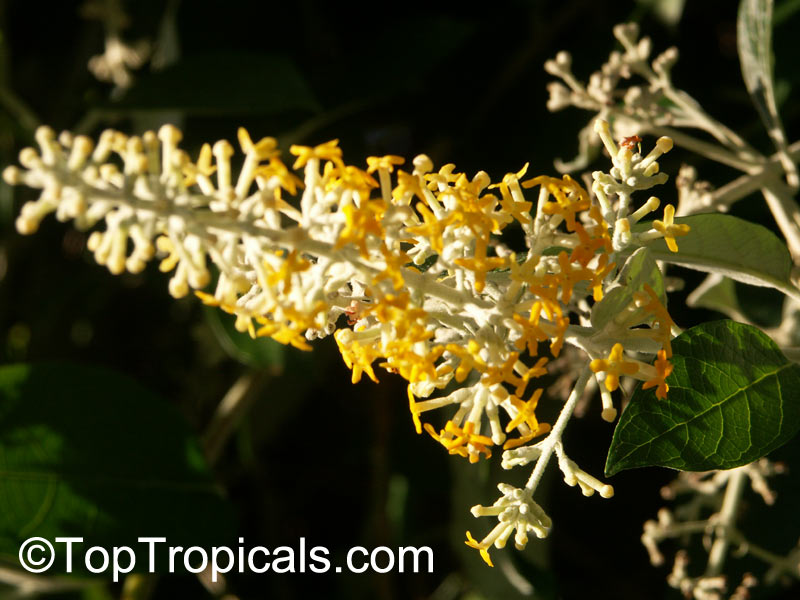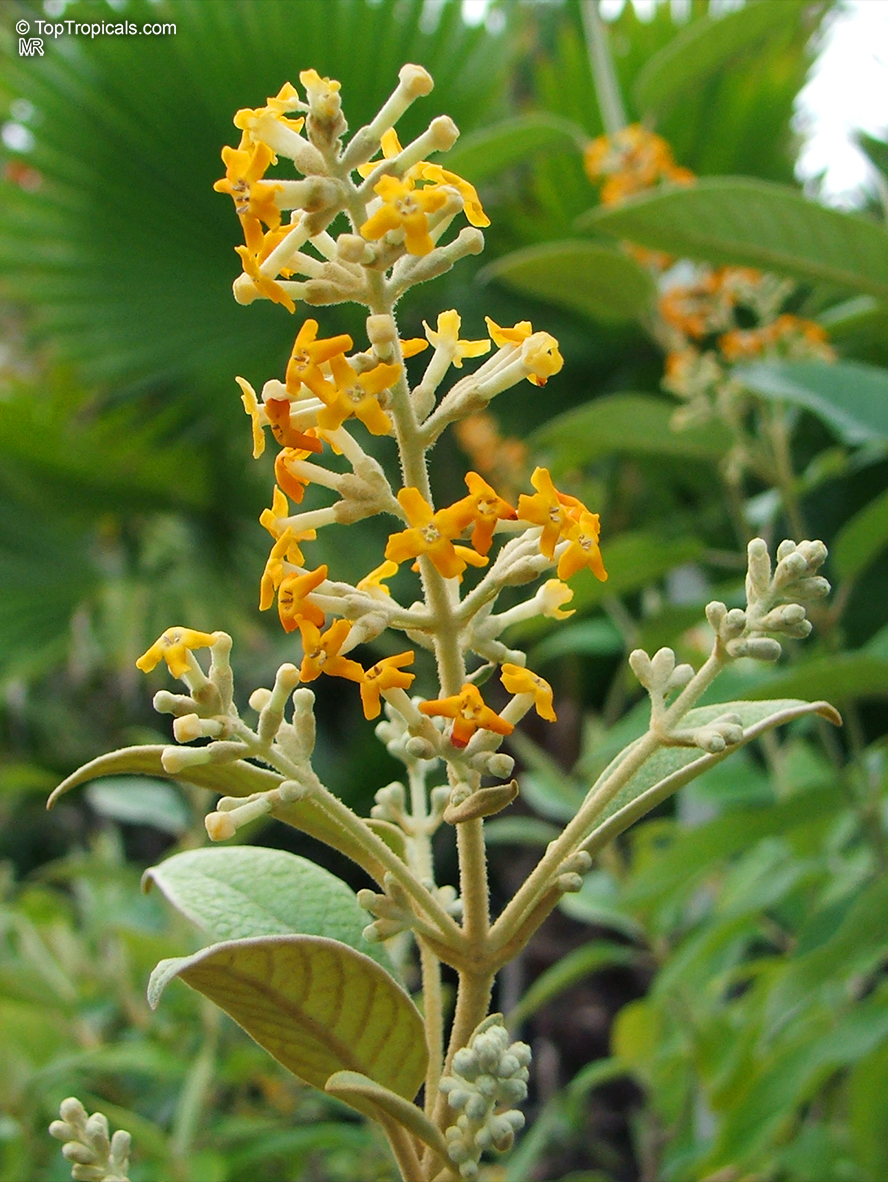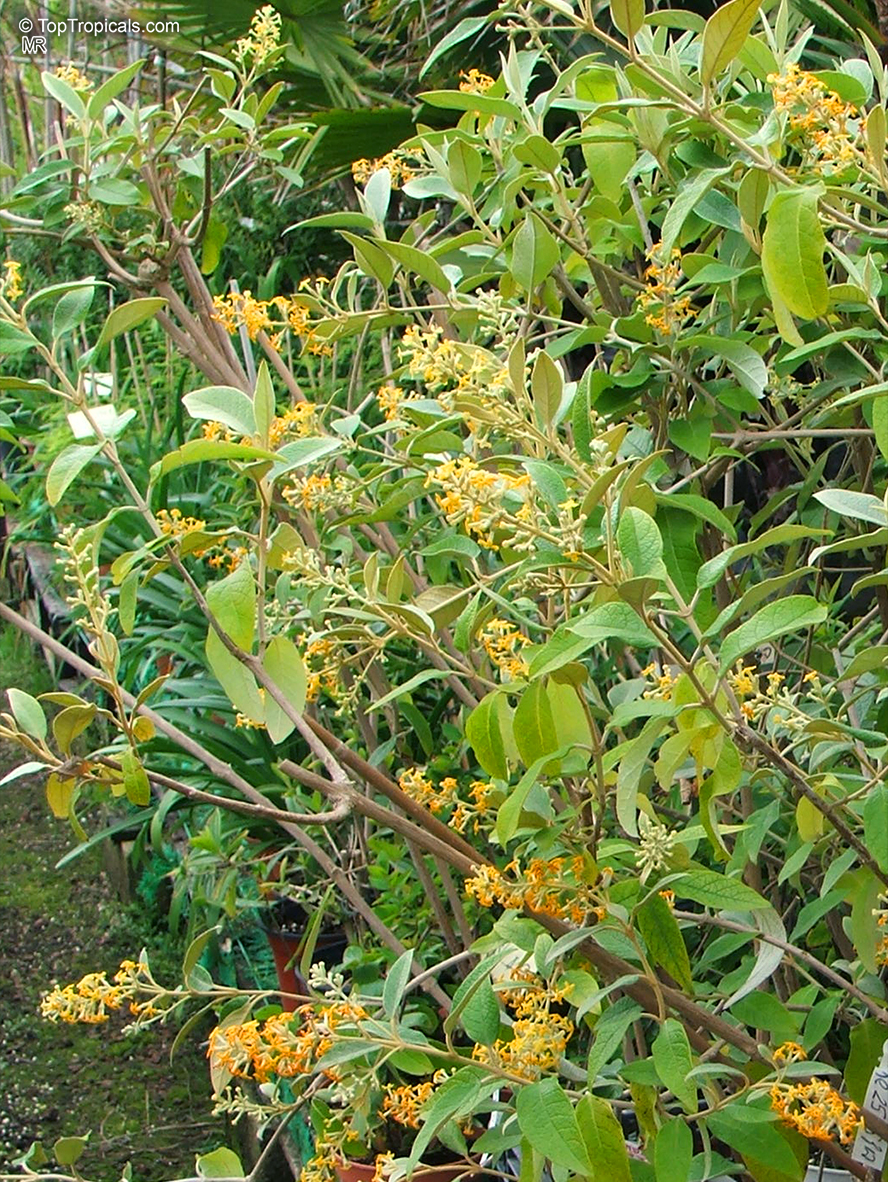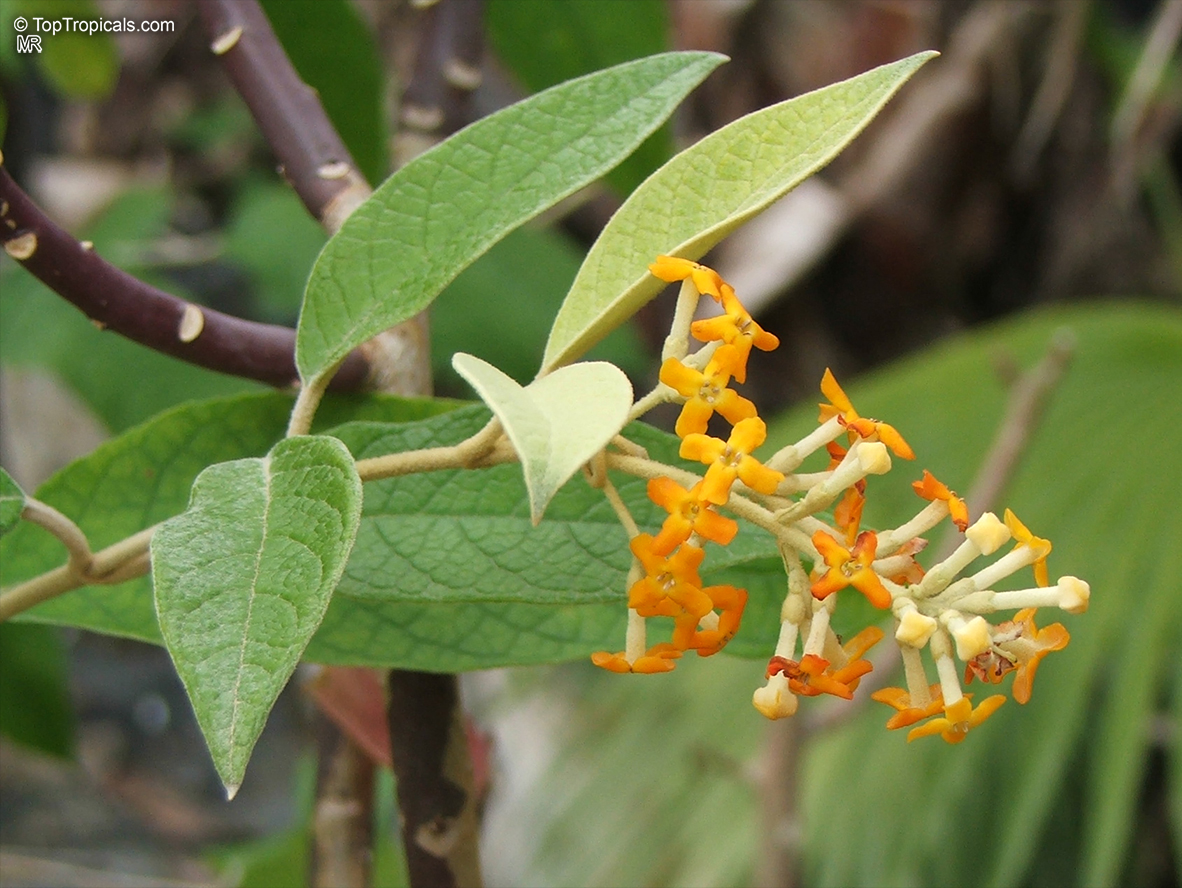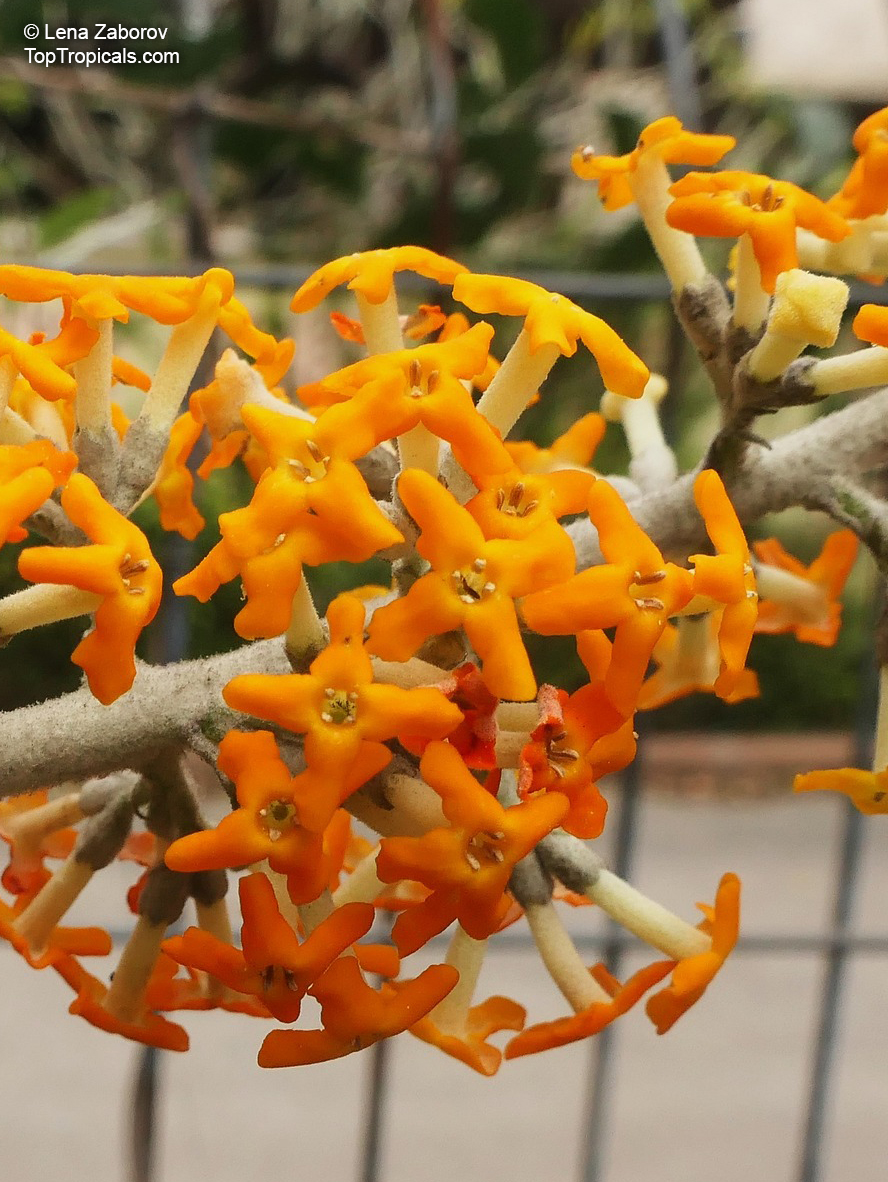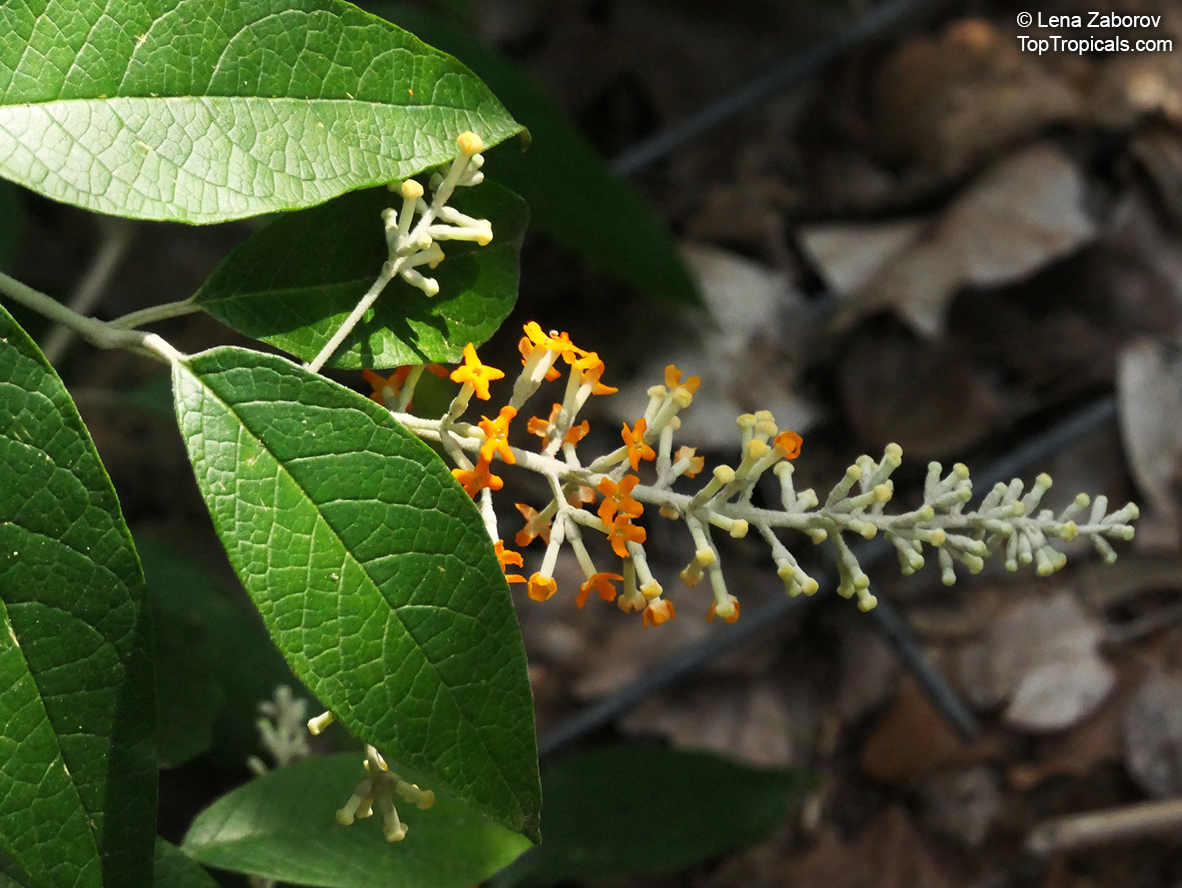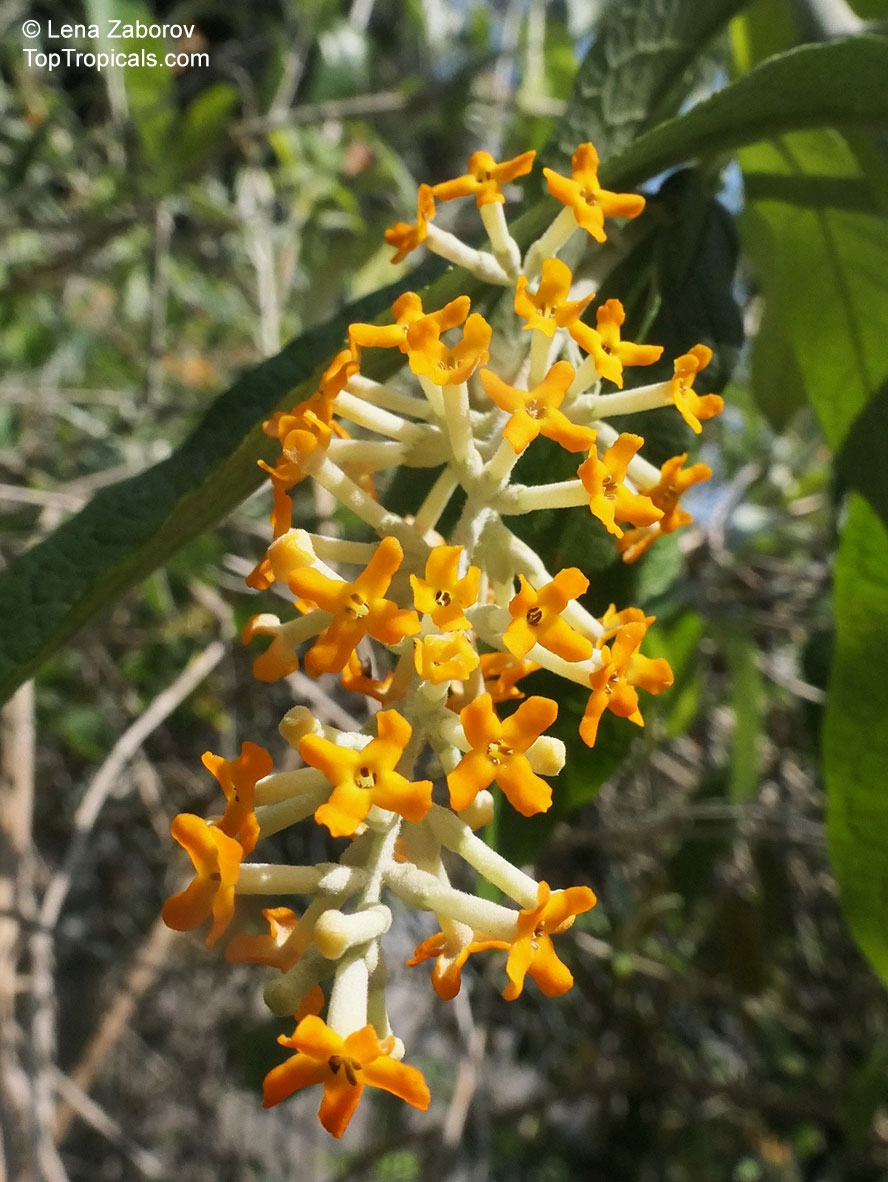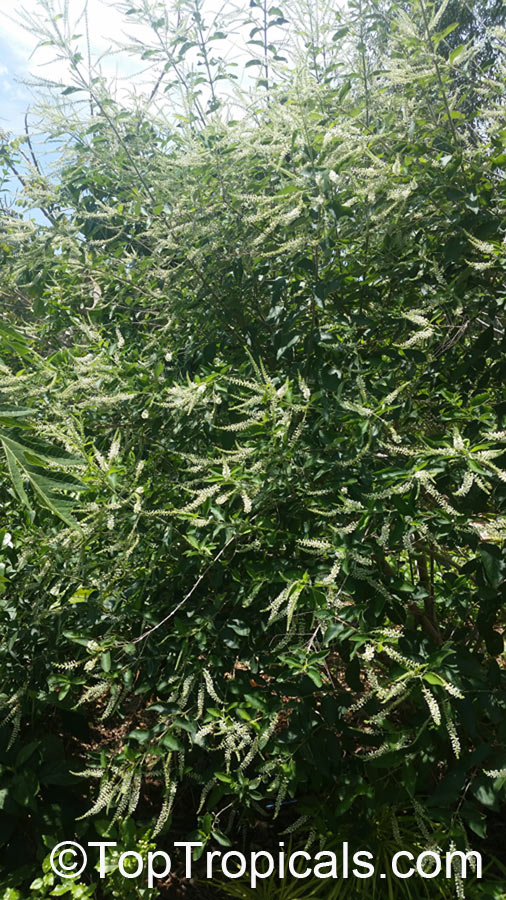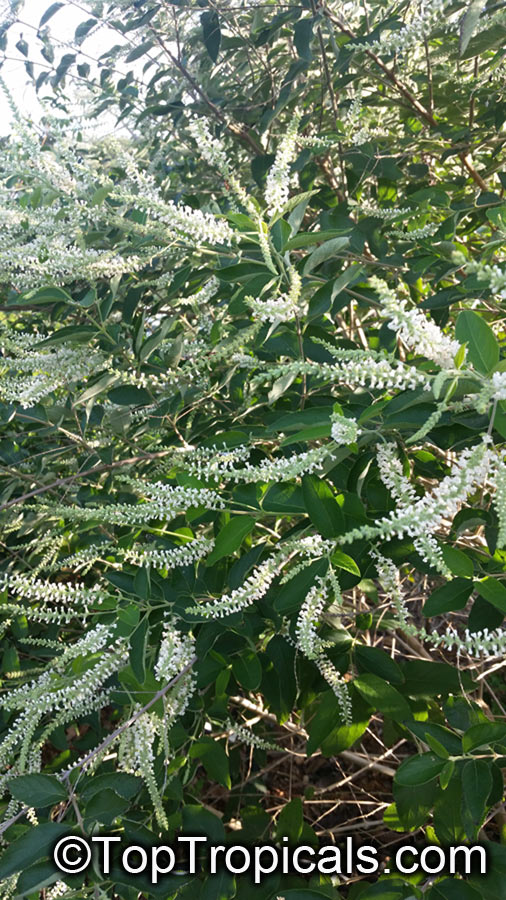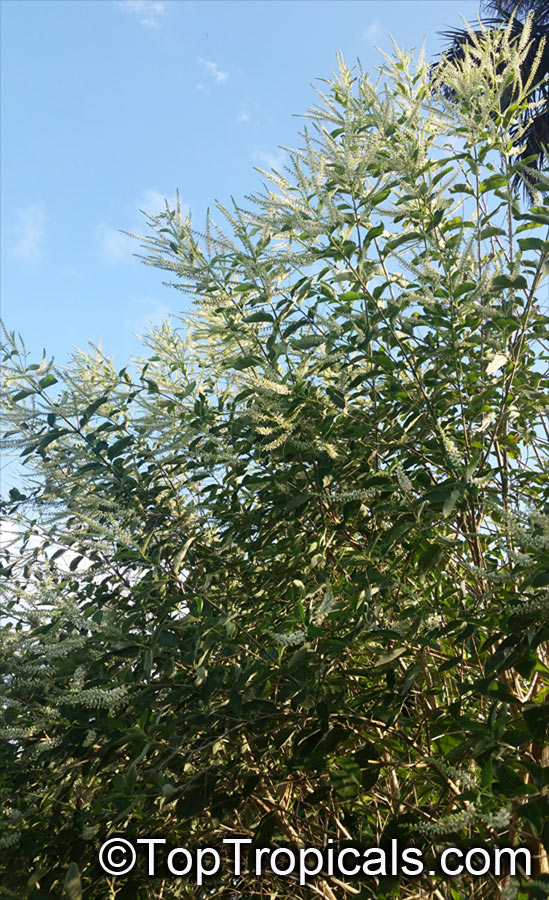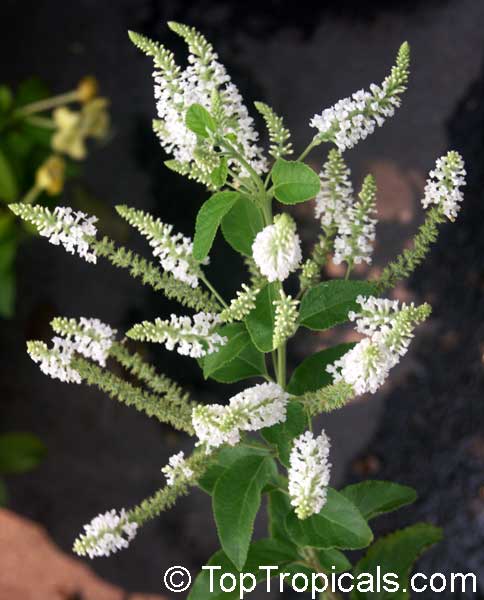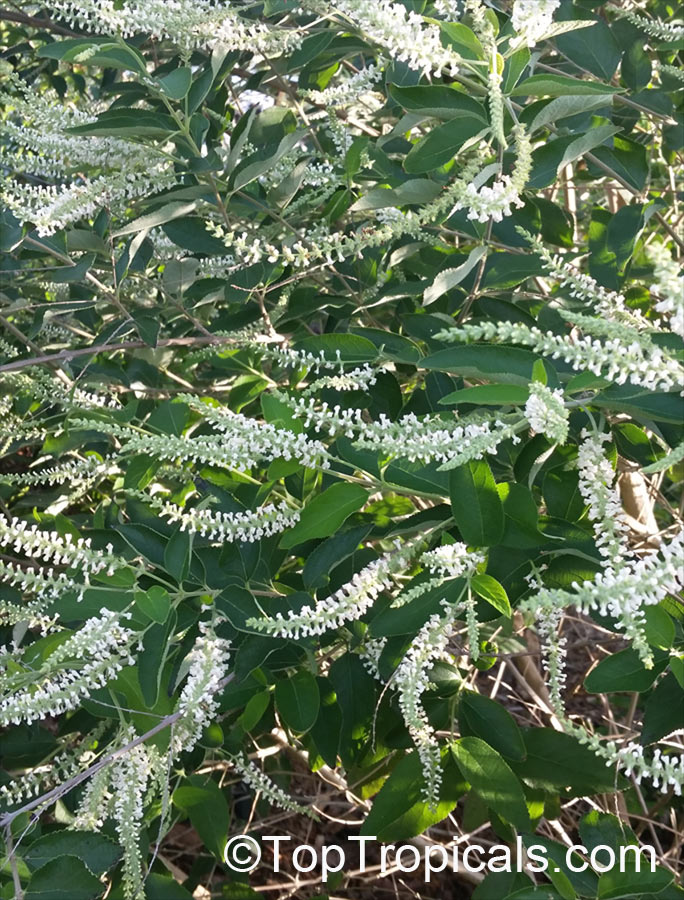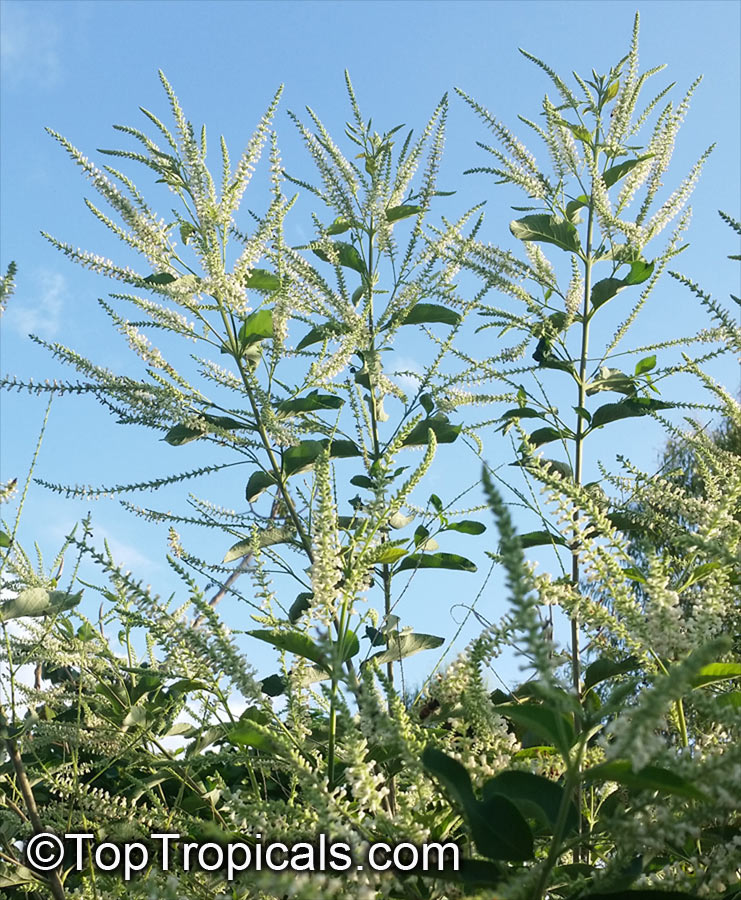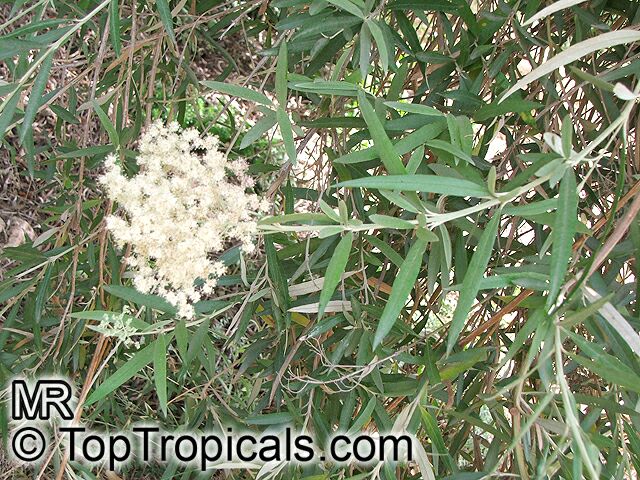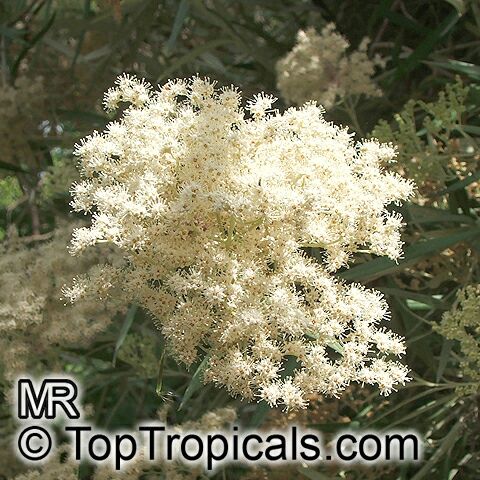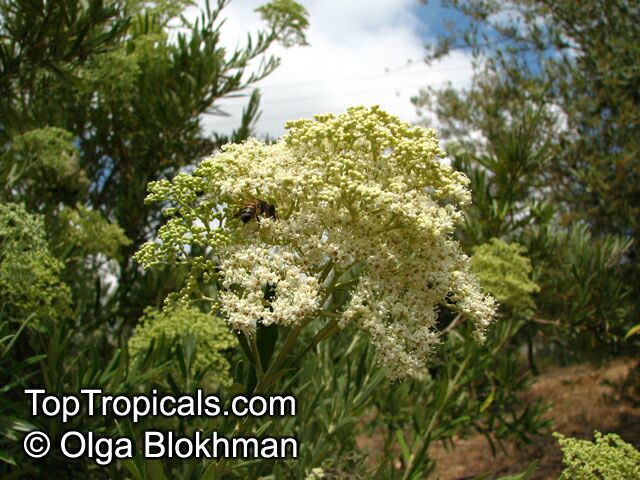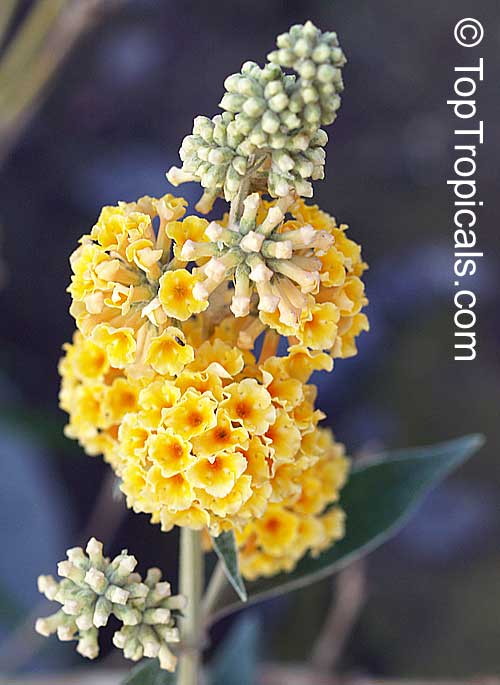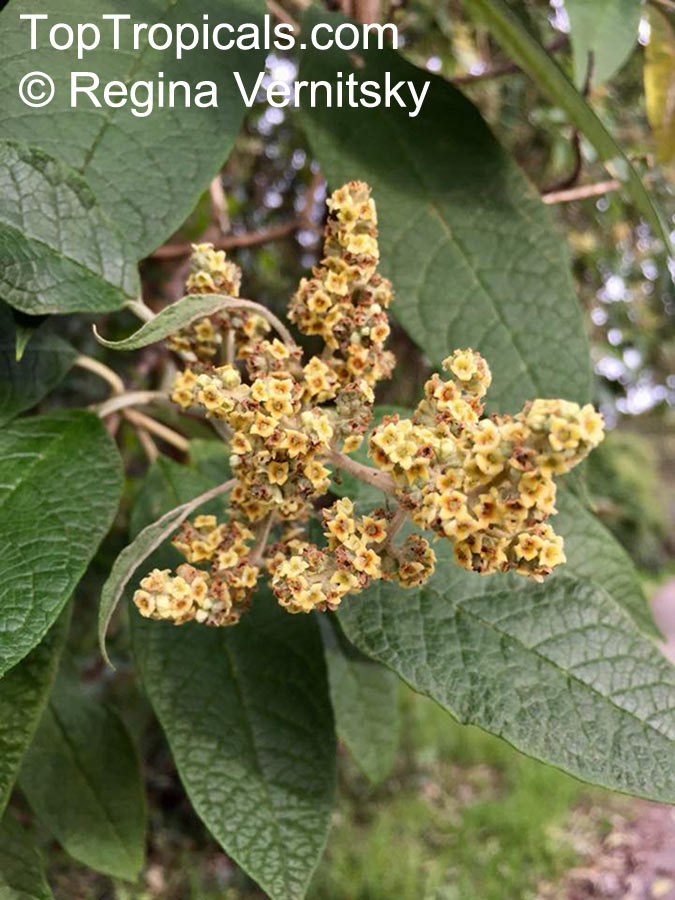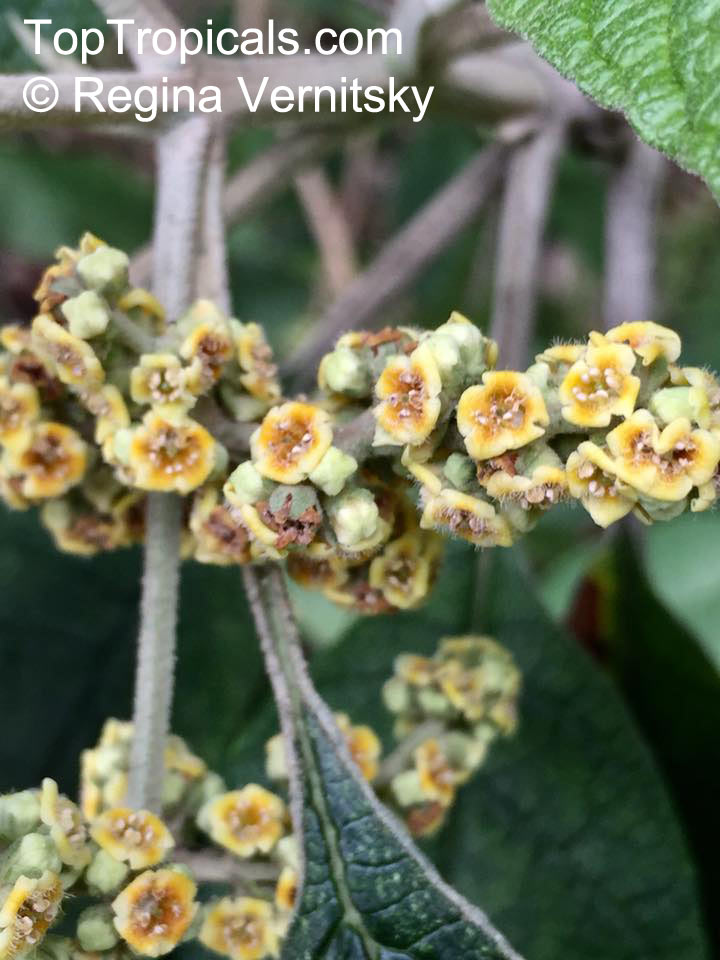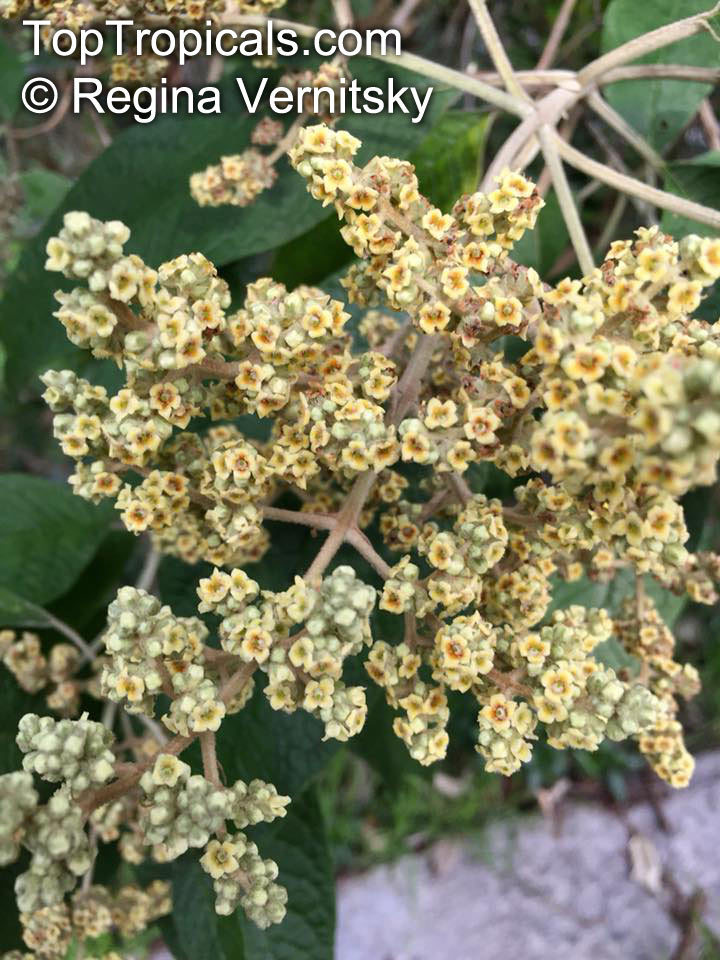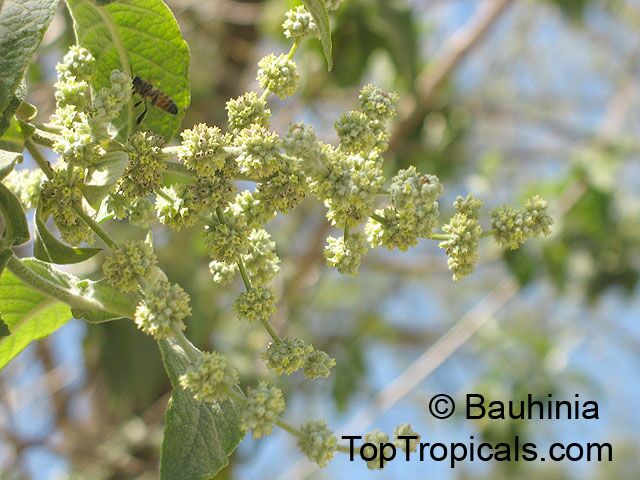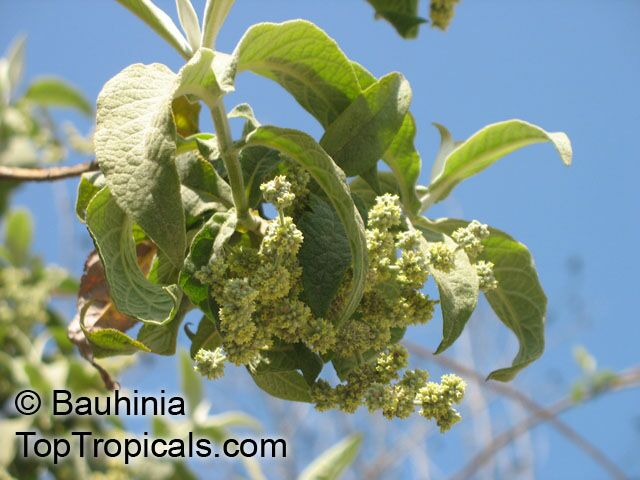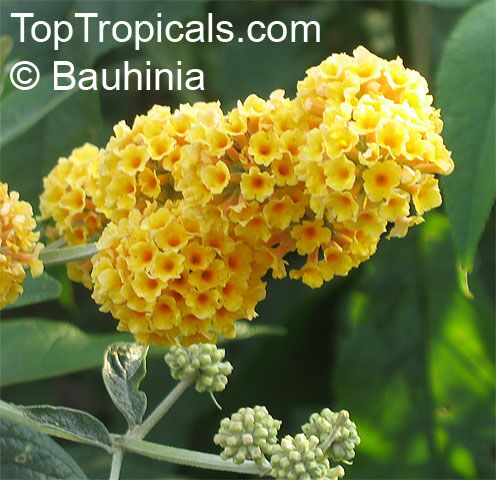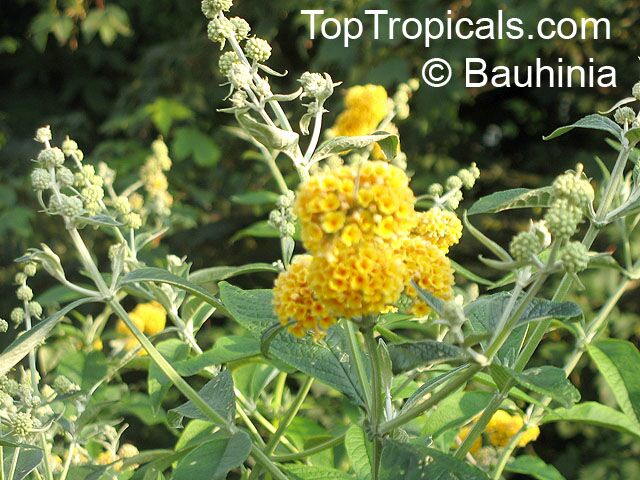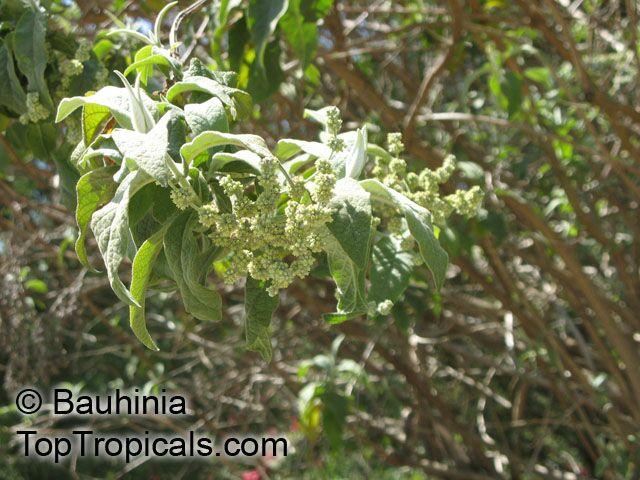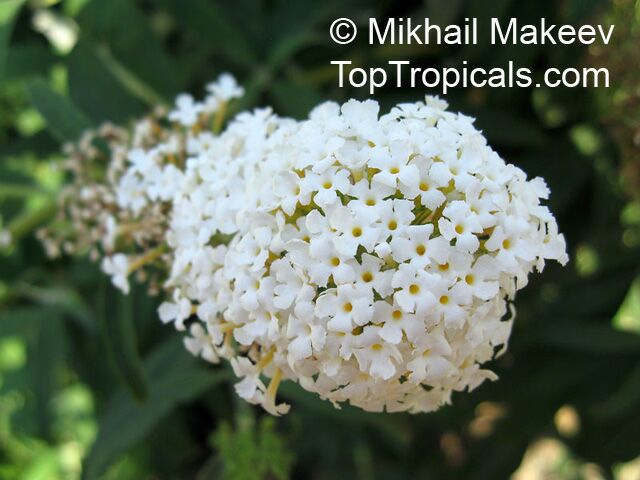Buddlejaceae - Botanical Family
Top Tropicals Plant Encyclopedia
| Number of plants found: 6 |
Botanical name: Buddleja davidii
Common name: Butterfly Bush
Family: Buddlejaceae (Formerly:Scrophulariaceae)
Origin: China










Butterfly bush likes well drained, average soil. They thrive in fairly dry conditions once established. Roots may perish in wet soil. Butterfly bushes are semi-evergreen in climates with mild winters. They may be cut back to the ground and will re-emerge from roots in their northernmost range, but will not reach the maximum size they do in warmer climes. It is advisable to cut back the shrubs in any case, since flowers are usually larger and more prolific on new wood.
Similar species -Buddleja madagascariensis.
Botanical name: Buddleja indica
Common names: Parlor Oak, Nicodemia
Family: Buddlejaceae (Formerly:Scrophulariaceae)
Origin: Madagascar






The shrub rarely flowers in cultivation, and is principally grown for its unusual foliage.
Botanical names: Buddleja madagascariensis, Buddleja nicodemia, Nicodemia madagascariensis
Common names: Smoke bush, Yellow Butterfly bush
Family: Buddlejaceae (Formerly:Scrophulariaceae)
Origin: Madagascar
Hardiness: 20°F Protect from frost







Buddleia madagascariensis, native to Madagascar, is a striking, fragrant ornamental shrub with a sprawling habit that is cultivated and naturalized in tropical areas of the world.
Botanical name: Buddleja paniculata
Common name: Butterfly bush
Family: Buddlejaceae (Formerly:Scrophulariaceae)
Origin: United States of America







The plant prefers light (sandy), medium (loamy) and heavy (clay) soils, requires well-drained soil and can grow in nutritionally poor soil. The plant prefers acid, neutral and basic (alkaline) soils and can grow in very alkaline soil. It cannot grow in the shade. It requires dry or moist soil and can tolerate drought. It can tolerate atmospheric pollution.
Botanical name: Buddleja saligna
Common name: False Olive
Family: Buddlejaceae (Formerly:Scrophulariaceae)
Origin: South Africa









The plant is used for traditional medicinal purposes, the roots as a purgative and the leaves to treat coughs and colds. The wood is very fine grained and was used to make small pieces of furniture. The straight branches were used to make fence posts. The false olive was used to make asseggai handles. It also makes good fuel wood as it burns with an intense heat. The large amounts of pollen and nectar it produces makes it popular with bee farmers. May be used as Bonsai.
Buddleja saligna is easily grown from seed or cuttings.
Botanical name: Buddleja sp.
Common name: Butterfly Bush
Family: Buddlejaceae (Formerly:Scrophulariaceae)
Hardiness: -10°F












Flower color varies widely, with white, pink, red, purple, orange or yellow flowers produced by different species and cultivars; they are rich in nectar and often strongly scented.
Use link to repeat this search:
https://toptropicals.com/cgi-bin/garden_catalog/cat.cgi?search_op=and&keyword_op=and&language=e&family=Buddlejaceae
&number=10&no_change_lang=1&user=tt&sale=1&first=0
